
Methods and Applications in Fluorescence
Scope & Guideline
Bridging Disciplines Through Fluorescence Excellence
Introduction
Aims and Scopes
- Fluorescence Spectroscopy Techniques:
The journal focuses on various fluorescence spectroscopy methods, including time-resolved fluorescence, fluorescence correlation spectroscopy, and ratiometric fluorescence techniques, highlighting their applications in material science, biology, and chemistry. - Development of Fluorescent Probes:
A significant area of research is the design and synthesis of novel fluorescent probes for detecting ions, molecules, and biological markers, which are crucial for advancing analytical and biomedical applications. - Multimodal Imaging Techniques:
The integration of fluorescence with other imaging techniques, such as Raman and infrared spectroscopy, is a recurring theme, showcasing the journal's commitment to advancing imaging technologies for complex biological and material systems. - Nanomaterials and Quantum Dots:
Research on the synthesis and application of nanomaterials, particularly carbon dots and semiconductor quantum dots, is a core focus, with studies emphasizing their optical properties and potential in sensing and bioimaging. - Machine Learning in Fluorescence:
The journal explores the application of machine learning techniques in fluorescence data analysis and imaging, indicating a trend towards computational approaches in enhancing fluorescence methodologies.
Trending and Emerging
- Advanced Fluorescence Imaging Techniques:
There is a growing interest in advanced imaging techniques such as super-resolution microscopy and fluorescence lifetime imaging, which enhance spatial and temporal resolution in biological studies. - Synthesis and Application of Smart Fluorescent Probes:
Emerging research focuses on the development of smart, multifunctional fluorescent probes capable of responding to environmental changes, which are crucial for real-time monitoring in various applications. - Integration of AI and Machine Learning:
The application of artificial intelligence and machine learning in analyzing fluorescence data is on the rise, facilitating more efficient and accurate interpretation of complex datasets. - Nanotechnology in Fluorescence:
There is an increasing trend towards utilizing nanotechnology, particularly in the development of nanomaterials for fluorescence applications, which enhance sensitivity and specificity in detection methods. - Fluorescence in Therapeutic Applications:
Research on the use of fluorescence techniques in therapeutic contexts, such as photodynamic therapy and drug delivery systems, is becoming more prominent, indicating an intersection of fluorescence with clinical applications.
Declining or Waning
- Traditional Fluorescence Techniques:
There is a noticeable decrease in publications focusing solely on conventional fluorescence techniques without integration with advanced methodologies, as researchers increasingly seek to combine different imaging modalities. - Biological Applications of Fluorescence:
The number of studies specifically targeting biological applications, such as cellular imaging and protein interactions, seems to be waning, possibly due to the saturation of research in this area or a shift towards more interdisciplinary approaches. - Fluorescence in Environmental Monitoring:
Research papers centered on environmental applications of fluorescence, such as water quality monitoring and pollutant detection, have become less frequent, suggesting a potential shift to other analytical methods or technologies.
Similar Journals
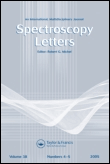
SPECTROSCOPY LETTERS
Catalyzing Discoveries in Atomic and Molecular PhysicsSPECTROSCOPY LETTERS, published by Taylor & Francis Inc, is a pivotal journal that plays a significant role in the fields of Analytical Chemistry, Atomic and Molecular Physics, and Optics. With an ISSN of 0038-7010 and E-ISSN of 1532-2289, it provides a platform for the dissemination of cutting-edge research and developments in spectroscopy and its wide-ranging applications. As of 2023, the journal is ranked in the third quartile (Q3) across its relevant categories, reflecting its importance in these scientific domains. The journal has a continuous publication history from 1968 to 2024, establishing a rich legacy in academic literature. Although it currently does not offer Open Access options, SPECTROSCOPY LETTERS remains a valuable resource for researchers, professionals, and students seeking to advance their knowledge and applications in spectroscopy. For those in the arena of physics and chemistry, this journal is essential for keeping abreast of the latest findings and methodologies in the field.

Journal of Analysis and Testing
Innovative insights in analytical chemistry and testing.Journal of Analysis and Testing is a premier academic journal published by SPRINGER SINGAPORE PTE LTD, dedicated to advancing the fields of analytical and environmental chemistry. With ISSN 2096-241X and E-ISSN 2509-4696, the journal has established a significant presence since its inception in 2017, converging its focus until 2024. The journal's outstanding rankings in 2023, including Q1 quartile placements in Analytical Chemistry, Instrumentation, and Spectroscopy, underscore its pivotal role in disseminating high-quality research. Researchers can access cutting-edge studies that explore innovative testing methodologies, electrochemical analyses, and material evaluations, making it an essential resource for professionals and students alike. The Journal of Analysis and Testing not only celebrates advances in science and technology but also promotes interdisciplinary collaborations, ensuring widespread impact across analytical and environmental domains. As such, this journal plays a vital role in shaping the future of analytical practices and methodologies, positioning itself as a key conduit for knowledge exchange in the scholarly community.

Biophysical Reviews
Shaping the Future of Biophysical Research TogetherBiophysical Reviews, published by SpringerNature, is a leading international journal focused on the interdisciplinary areas of biophysics, structural biology, and molecular biology. With an impressive 2023 impact factor, the journal ranks in the Q1 category for biophysics and is also highly regarded in structural and molecular biology, reflecting its commitment to advancing understanding in these critical fields. Operating since 2009 and converging toward its goal of comprehensive coverage by 2024, Biophysical Reviews provides a platform for researchers to share innovative insights and critical reviews that shape the future of biophysical sciences. Its rigorous peer-review process ensures high-quality publications that are closely monitored within the academic community, making it an essential resource for researchers, professionals, and students aiming to stay at the forefront of biophysical research. Access options are available for enhancing the dissemination of knowledge, supporting a broad audience dedicated to scientific excellence.
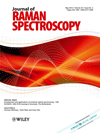
JOURNAL OF RAMAN SPECTROSCOPY
Illuminating insights through innovative spectroscopy.JOURNAL OF RAMAN SPECTROSCOPY, published by WILEY, is a leading journal dedicated to advancing the field of Raman spectroscopy and its applications across diverse scientific disciplines. With an impact factor reflective of its esteemed reputation, this journal positions itself in the Q2 category for both Materials Science and Spectroscopy in the 2023 rankings, demonstrating its relevance and contribution to these fields. Since its inception in 1973, it has consistently provided a platform for innovative research, offering valuable insights and methodologies to researchers, professionals, and students alike. The journal caters to a global audience and includes peer-reviewed articles that encapsulate groundbreaking findings and evolving trends in spectroscopy, enriching our understanding and implementation of this vital analytical technique. While it does not offer Open Access options, its content is accessible through institutional subscriptions, ensuring broad dissemination in the scientific community. By bridging theoretical knowledge and practical applications, the JOURNAL OF RAMAN SPECTROSCOPY plays a pivotal role in shaping the future of materials analysis and characterization.

ARCHAEOMETRY
Pioneering Interdisciplinary Dialogue in Archaeology and History.ARCHAEOMETRY, published by WILEY, is a premier journal that has established itself at the forefront of research in the fields of archaeology and history since its inception in 1958. With an impressive Q1 ranking in both Archaeology and History for 2023, and notable Scopus rankings placing it in the top 98th percentile for History and the 91st percentile for Archaeology, this journal is an invaluable resource for researchers and professionals dedicated to advancing knowledge in these disciplines. The journal's comprehensive scope addresses a wide array of topics related to the materials and techniques used in archaeological investigation, fostering interdisciplinary dialogue and collaboration. Though not an open access publication, its impactful content is meticulously curated to promote scholarly excellence and innovation. By bridging the gap between science and the humanities, ARCHAEOMETRY plays a crucial role in unraveling the complexities of human pasts, making it an essential addition to the libraries of scholars and students alike.

Quantum Beam Science
Bridging Theory and Application in Quantum ResearchQuantum Beam Science, published by MDPI since 2017, is an esteemed open-access journal that occupies a pivotal role in the fields of atomic and molecular physics as well as nuclear and high-energy physics. Based in Switzerland, this journal embraces a global community of researchers dedicated to advancing our understanding of quantum phenomena through innovative experimental and theoretical approaches. With an impactful presence reflected in its category quartiles—ranking Q3 in both the Atomic and Molecular Physics, and Nuclear and High Energy Physics categories—the journal aims to bridge the gap between foundational research and practical applications of quantum technology. Since adopting an open-access model, Quantum Beam Science has fostered greater accessibility to groundbreaking studies, facilitating knowledge dissemination among researchers and professionals alike. This commitment to open science empowers the next generation of physicists to contribute to a rapidly evolving discipline, ensuring that critical advancements reach a diverse audience. Stay informed on the latest developments in quantum research as the journal covers a wide range of topics, making it an essential resource for students, academics, and professionals in the field.
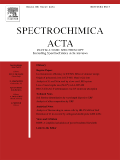
SPECTROCHIMICA ACTA PART B-ATOMIC SPECTROSCOPY
Exploring the Depths of Atomic Interactions and Applications.SPECTROCHIMICA ACTA PART B-ATOMIC SPECTROSCOPY, published by PERGAMON-ELSEVIER SCIENCE LTD, is a leading peer-reviewed journal dedicated to advancing the field of atomic spectroscopy. With a respectable impact within its category—achieving Q2 quartile rankings in Analytical Chemistry, Atomic and Molecular Physics, Instrumentation, and Spectroscopy according to the 2023 metrics—this journal plays a pivotal role in disseminating high-quality research findings. Over its impressive publication history since 1967, the journal has continuously provided a platform for researchers to present innovative methodologies, theoretical advancements, and practical applications related to atomic spectroscopy. The journal is recognized for its rigorous peer-review process and aims to foster scholarly dialogue among professionals and students alike, reinforcing its significance in the scientific community. Although it does not offer open access options, its strong presence in notable databases ensures that the research reaches a broad audience. As a part of the ongoing dialogue in atomic and molecular sciences, SPECTROCHIMICA ACTA PART B is an essential resource for those at the forefront of related research.
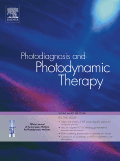
Photodiagnosis and Photodynamic Therapy
Illuminating Advances in Light-Based MedicinePhotodiagnosis and Photodynamic Therapy is a leading journal published by Elsevier, specializing in the fields of biophysics, dermatology, oncology, and pharmacology. With an impressive Q2 ranking across multiple categories in the 2023 category quartiles, this journal is pivotal for researchers and practitioners aiming to advance their knowledge and expertise in photodiagnostic and therapeutic techniques. Since its inception in 2004, it has provided a critical platform for peer-reviewed articles exploring the latest advancements and applications in light-based treatments. As of 2024, the journal will be fully Open Access, enhancing its accessibility and reach across the scientific community. Located in Amsterdam, Netherlands, this journal's commitment to fostering innovation and collaboration makes it an essential resource for those interested in the intersection of light-based technologies and medicine. With its high visibility in key indexed databases like Scopus, researchers can trust that their contributions will be well-regarded and widely disseminated.

PHOTOSYNTHETICA
Advancing plant science through innovative research.PHOTOSYNTHETICA is a prominent academic journal published by the Academy of Sciences of the Czech Republic, Institute of Experimental Botany, dedicated to advancing the field of plant science and physiology. Established in 1979, this open-access journal has been a vital platform for high-quality research and critical discussions within the scientific community, with its current impact factor reflecting its significance—ranking in the third quartile in Physiology and the second quartile in Plant Science as of 2023. With an impressive Scopus ranking (#96/516) in Plant Science and an 81st percentile standing, PHOTOSYNTHETICA showcases innovative research trends and methodologies vital for understanding photosynthetic processes and plant biology. The journal's open-access policy, initiated in 2019, ensures that valuable findings are readily available to researchers, professionals, and students globally, fostering collaboration and knowledge exchange. Set in the heart of Europe, this journal continues to be a cornerstone for experts dedicated to exploring the complexities of plant systems and their physiological responses.
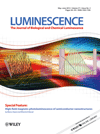
LUMINESCENCE
Exploring the Depths of Light and ScienceLUMINESCENCE is a premier international journal published by WILEY, dedicated to advancing the field of luminescence and its applications across various scientific disciplines. With an ISSN of 1522-7235 and an E-ISSN of 1522-7243, this journal plays a pivotal role in disseminating high-quality research from 1997 to 2024. Positioned in the <> Q3 quartile within Biophysics and Q2 in Chemistry (miscellaneous), LUMINESCENCE ranks #37 out of 111 in its chemistry category and #57 out of 152 in biophysics, reflecting its significant impact in these domains. The journal facilitates open access, enabling wide visibility and engagement with groundbreaking research findings. Aimed at researchers, professionals, and students alike, LUMINESCENCE serves as a vital platform for sharing innovative studies and fostering collaboration in luminescence phenomena, thereby enhancing our understanding and utilization of this critical aspect of modern science.